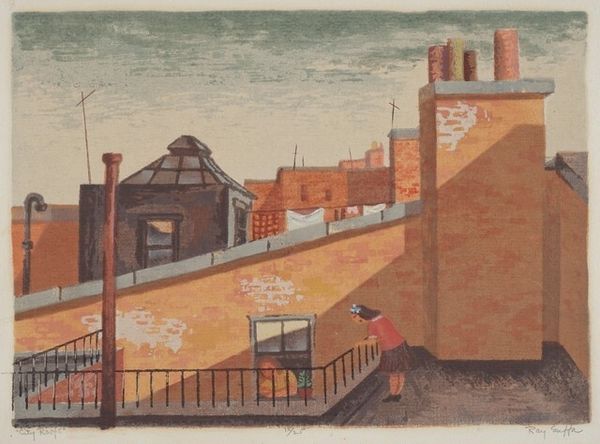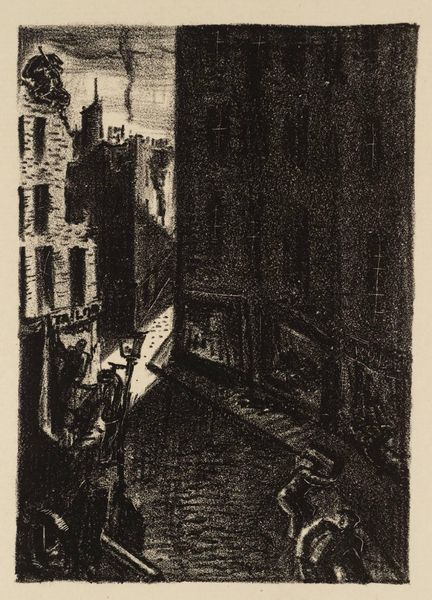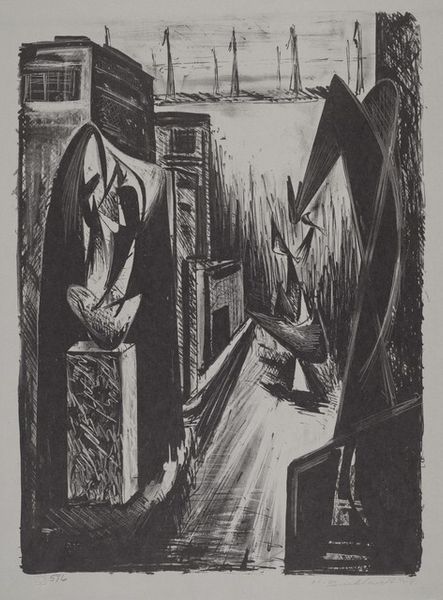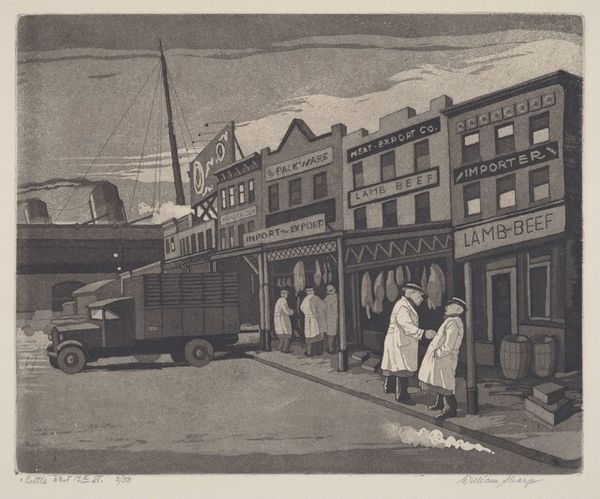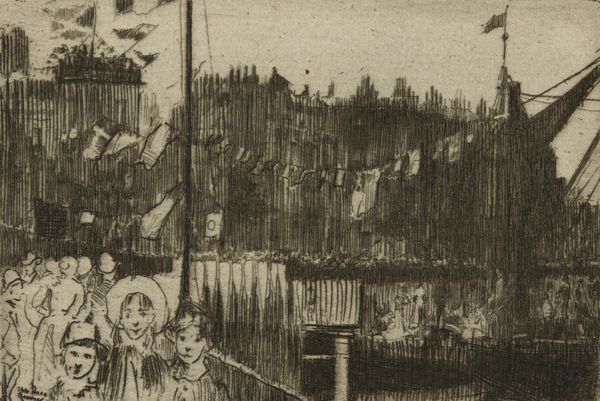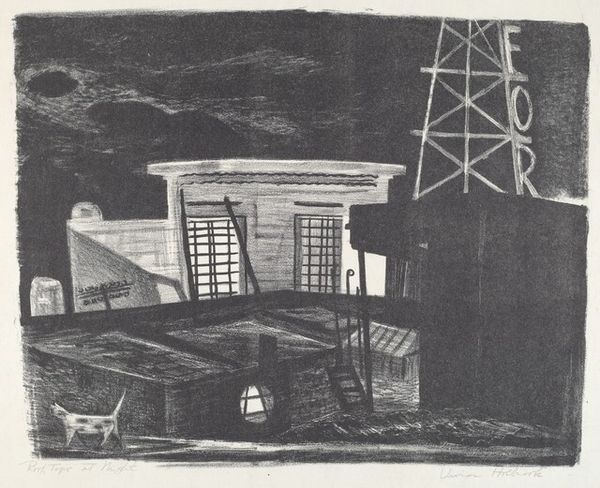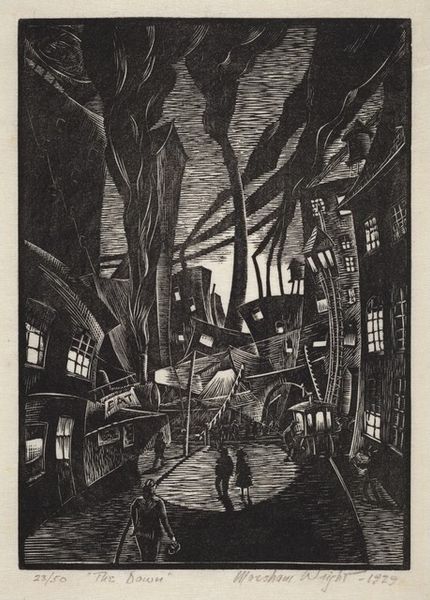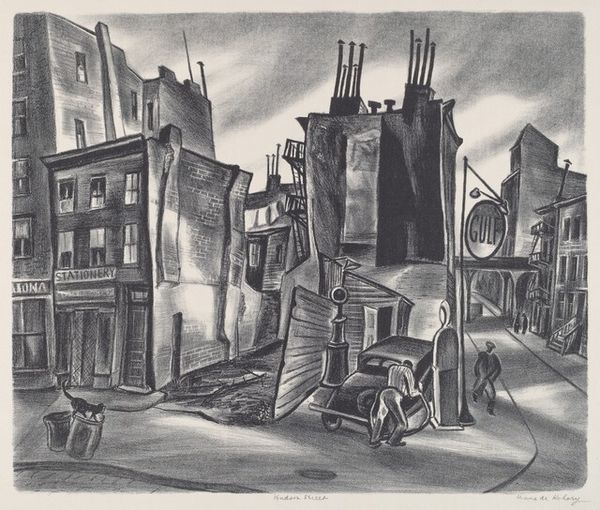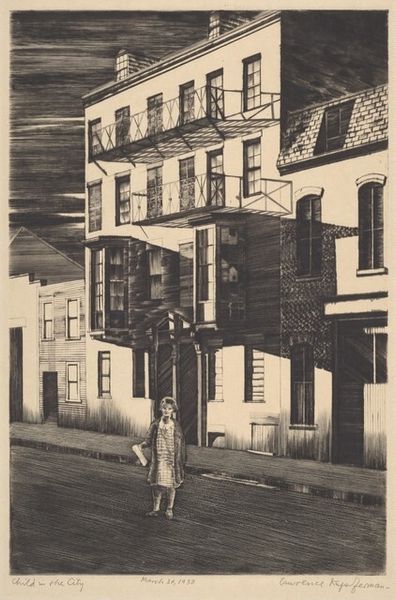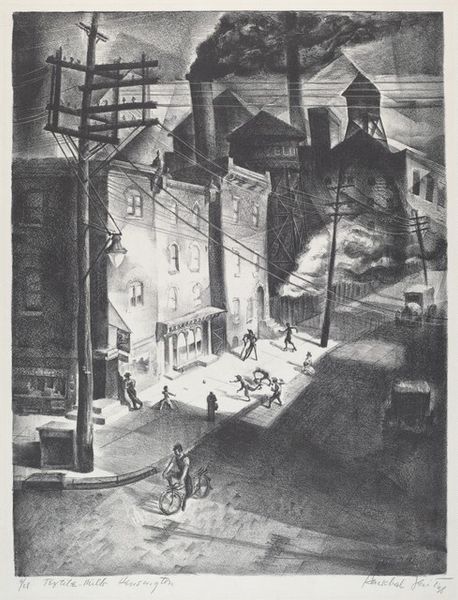
print, etching
#
art-deco
# print
#
etching
#
pencil drawing
#
cityscape
#
realism
Dimensions: plate: 28.9 x 36.2 cm (11 3/8 x 14 1/4 in.) sheet: 40 x 47.9 cm (15 3/4 x 18 7/8 in.)
Copyright: National Gallery of Art: CC0 1.0
Editor: Here we have Martin Lewis's 1929 etching, "Glow of the City." There's a lone woman on a balcony, looking out at this incredible cityscape under an eerie glow. I’m struck by how the everyday – the laundry lines, the fire escape – is juxtaposed with the grandeur of the buildings in the distance. What can you tell me about it? Curator: It's fascinating how Lewis captures that particular moment in New York's development, isn’t it? The print showcases a tension that was present at the time – the rise of these grand, imposing structures pushing against the more mundane realities of urban life. Notice how the architectural forms – the church spire, the skyscraper – pierce the sky, yet the foreground is dominated by the realities of domestic labor. How does this contrast affect your interpretation? Editor: It makes me think about class disparity, and how those "Glows" benefited only certain people. It’s like this woman is caught between worlds – dreaming of the city’s promise but grounded by her daily life. The light makes it almost theatrical, highlighting the contrast. Curator: Precisely. Lewis, along with other artists of the Ashcan School, was interested in depicting everyday life, the immigrant experience and ordinary laborers. They believed art had a role to play in honestly portraying all levels of society. Where do you think this print fits into that movement? Editor: I guess this shows the "real" side of the roaring twenties, which movies at the time, for example, usually glossed over. You rarely saw these everyday women. I can also see art-deco influences, given when it was created. Curator: I agree. Reflecting on this work, I think it serves as a powerful reminder of the complexities inherent in urban development and the social forces that shape artistic representation. The “Glow” is certainly complicated. Editor: I’m seeing a lot more layers now; it definitely reframes how I understand images of that period.
Comments
No comments
Be the first to comment and join the conversation on the ultimate creative platform.
